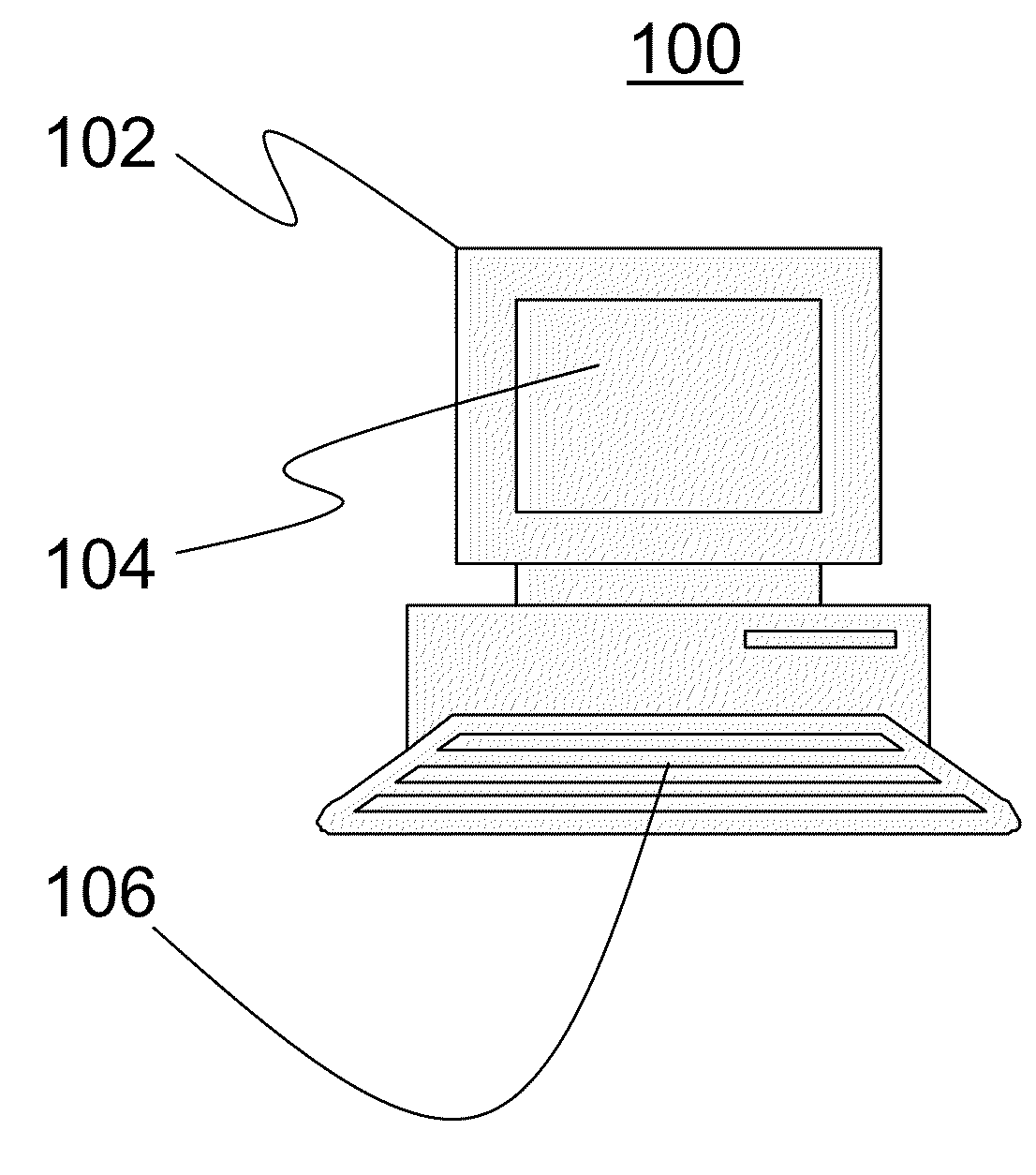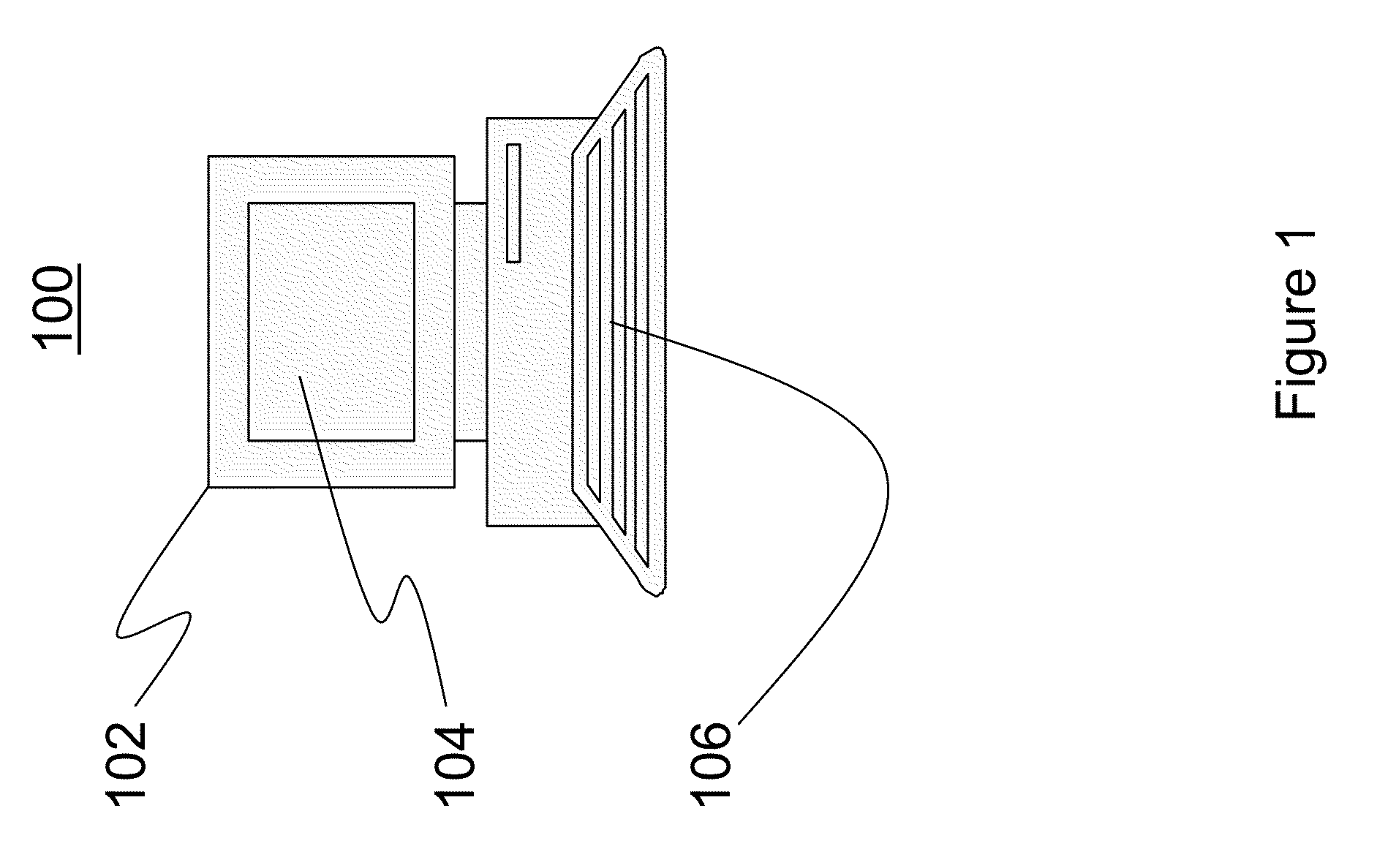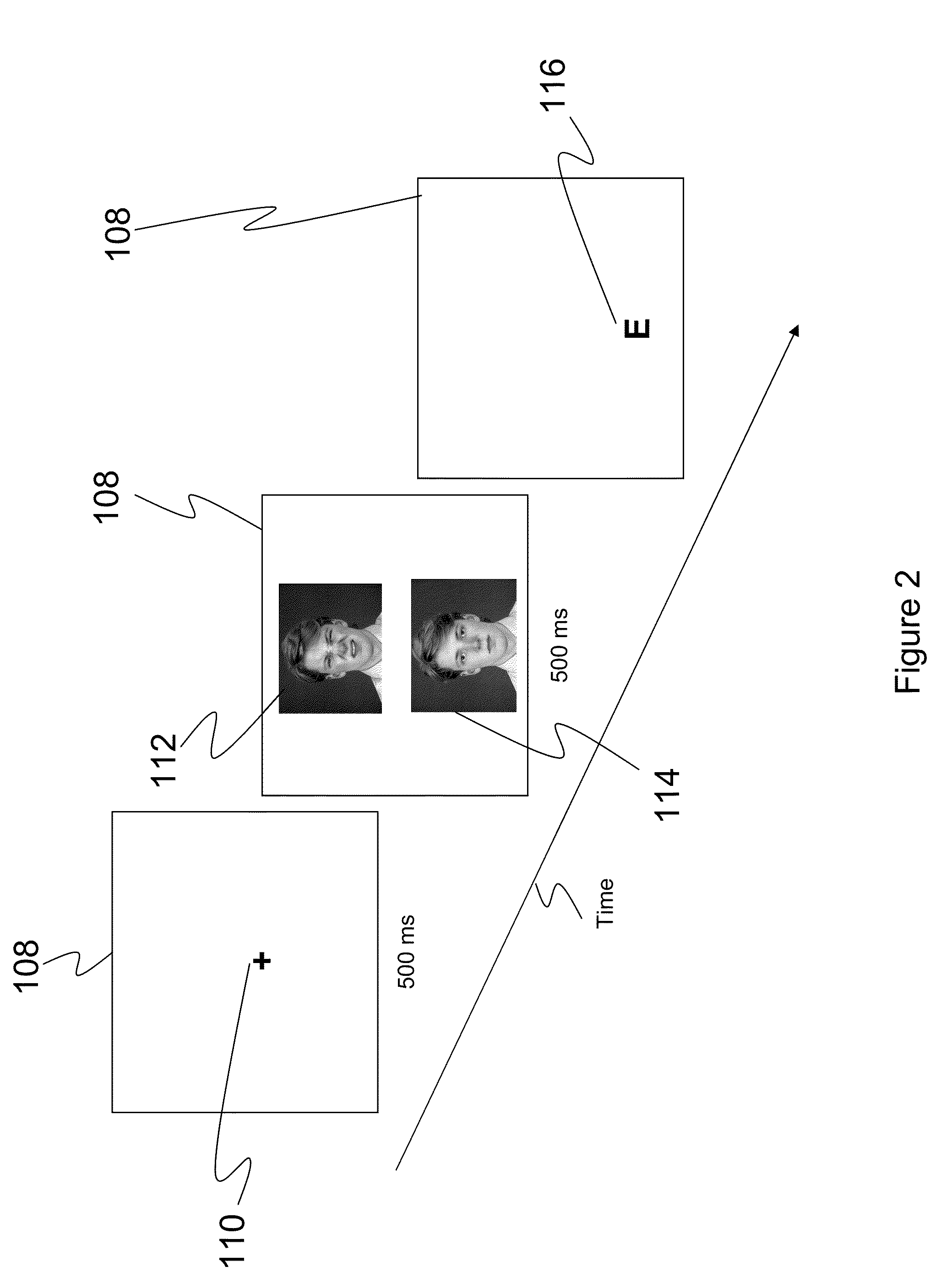Methods for treating social disorders
a social anxiety and treatment method technology, applied in mental therapies, other medical devices, instruments, etc., can solve the problems of reducing emotional responsiveness to a subsequent stressor, requiring significant expense and time, and affecting the treatment effect of patients, so as to reduce the subjective emotional and physiological responsiveness, reduce the attention bias toward rejection words, and reduce stress
- Summary
- Abstract
- Description
- Claims
- Application Information
AI Technical Summary
Benefits of technology
Problems solved by technology
Method used
Image
Examples
Embodiment Construction
[0023]The present invention relates to systems and methods for treating patients with anxiety. In one embodiment, the systems comprise a screen for displaying sets of stimuli, a means for controlling the display of the sets of stimuli, and a means for the patient to interact with the screen in response to the displayed stimuli or commands to the patient. The interaction of the patient with the stimuli relieves anxiety.
[0024]FIG. 1 represents one embodiment of the system 100 of the invention. The system of FIG. 1 comprises a means for displaying sets of stimuli, such as a computer 102, a screen 104 on which the sets of stimuli are displayed, and a tool for interacting with the screen, such as a keyboard 106. Additional examples of means for displaying sets of stimuli to a patient or user include, but are not limited to, human intervention, for example a therapist physically displaying the stimuli to the patient. As used herein, a computer is defined as it would be used in the compute...
PUM
 Login to View More
Login to View More Abstract
Description
Claims
Application Information
 Login to View More
Login to View More - R&D
- Intellectual Property
- Life Sciences
- Materials
- Tech Scout
- Unparalleled Data Quality
- Higher Quality Content
- 60% Fewer Hallucinations
Browse by: Latest US Patents, China's latest patents, Technical Efficacy Thesaurus, Application Domain, Technology Topic, Popular Technical Reports.
© 2025 PatSnap. All rights reserved.Legal|Privacy policy|Modern Slavery Act Transparency Statement|Sitemap|About US| Contact US: help@patsnap.com



